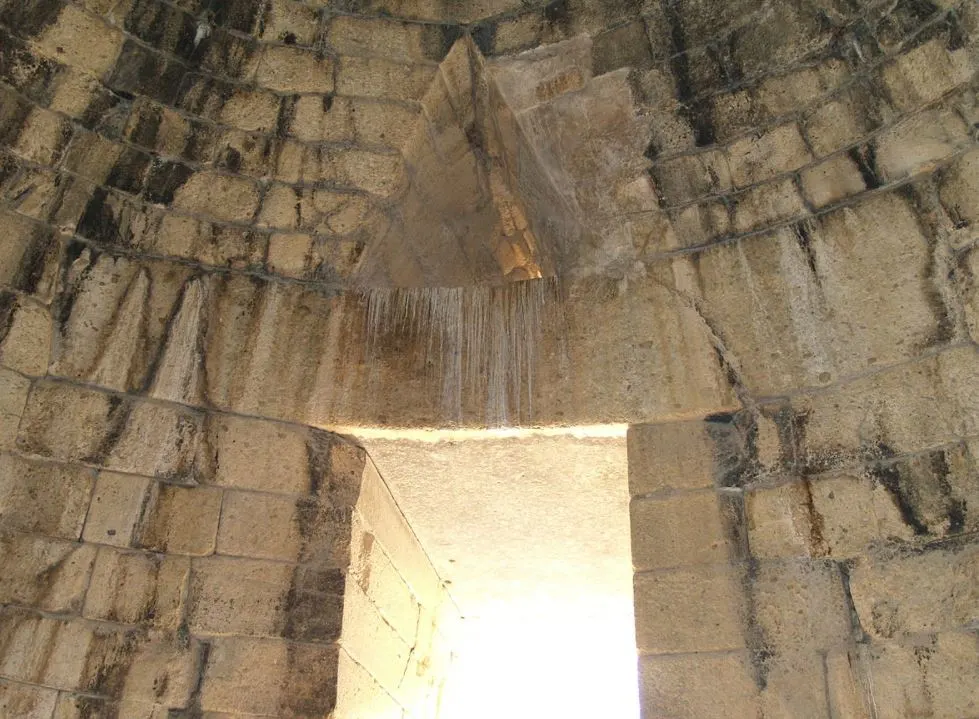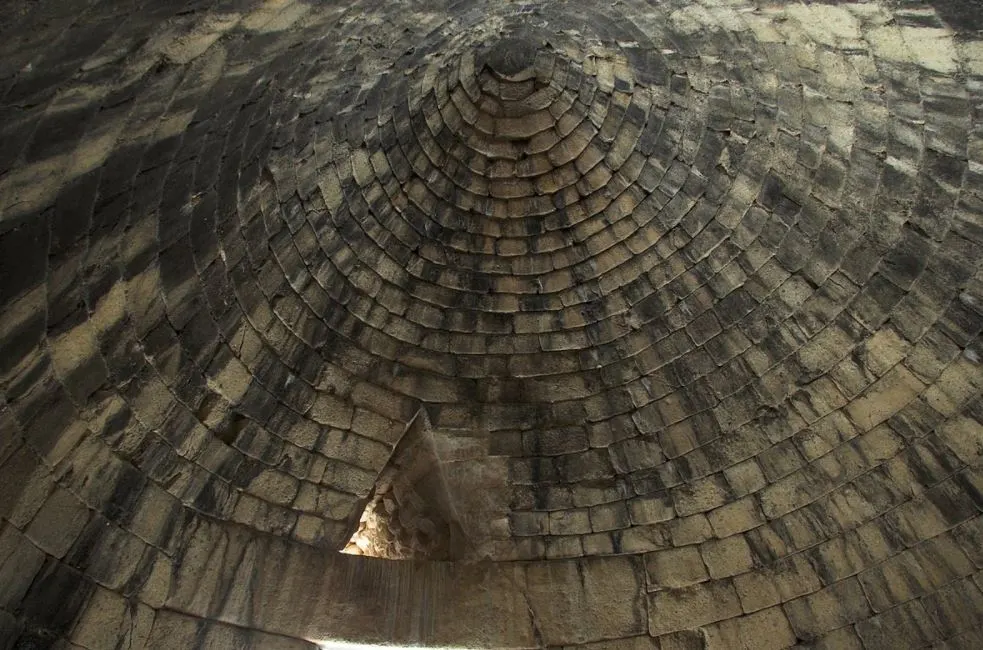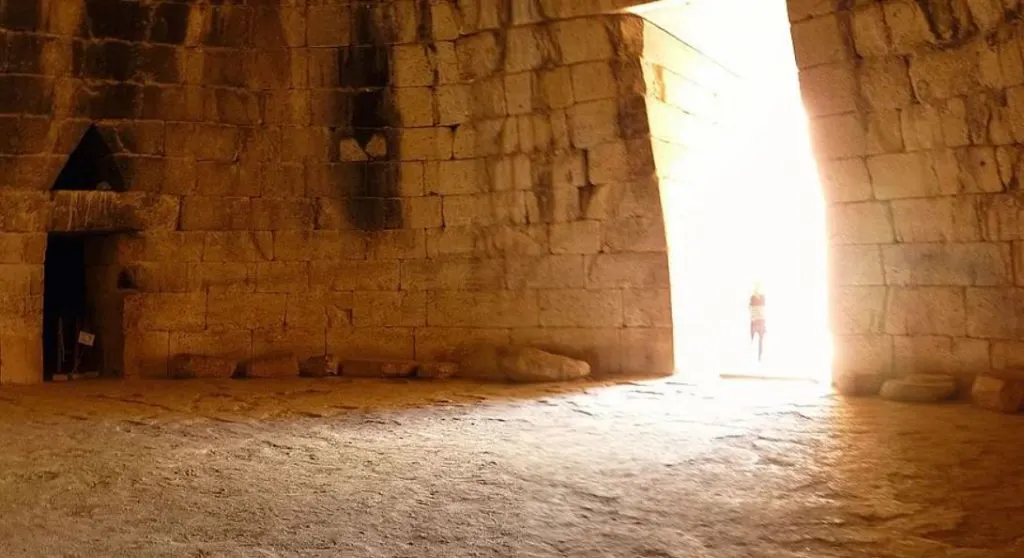One of the most fascinating ancient structures in Greece isn’t one of the multiple ancient Greek temples, but a funerary tomb that dates back to the Bronze Age.
In this article, we’ll take a closer look at some of the most interesting facts about the Treasury of Atreus, a structure with an incredible dome that held an amazing record for over a millennium!
1. It’s located on a hill at a famous Greek Archaeological site
The Treasury of Atreus is an extremely old structure located on the Panagitsa Hill at the archaeological site of Mycenae, Greece. This is situated in the northeastern part of the Peloponnesus Peninsula and about 120 kilometers (75 miles) to the southwest of the capital of the country, Athens.
During the Second Millenium B.C., Mycenae was one of the major centers of Greek civilization, which is also the reason that the era between 1600 and 1100 B.C. is referred to as “Mycenaean Greece.”
The city of Mycenae featured a large citadel and had a population of about 30,000 during its peak in 1350 B.C. Many of its ruins can still be visited and have become popular tourist attractions in the region.

2. It was probably built in the 13th century B.C. by a famous king
By the time that the Treasury of Atreus was built, Mycenae had dominated the Greek civilization for hundreds of years already. It’s believed that this remarkable structure was built around 1250 B.C.
This was effective still during the Bronze Age, a period that lasted between 3300 and 1200 B.C. It’s assumed it served its purpose as a tomb for one of the famous kings at the time.
Even though the structure is named after Atreus, it’s also possible that it was commissioned by another great King of Mycenae at the time, Agamemnon. Yes, that’s the guy who initiated the Trojan War after his brother Menelaus’ wife Helen was taken to Troy.

3. the stone above the entrance is the largest of its kind in the world
Just like the amazing Pyramids of Egypt, we need to stand in awe about the construction of this enormous tomb. Especially since the builders didn’t have modern machines and had to lift these enormous blocks into place with primitive tools.

The largest of all the blocks used to build this tomb is located right above the entrance and has dimensions of 8.3 x 5.2 x 1.2 meters (27 x 17 x 4 feet).
One of the most fascinating facts about the Treasury of Atreus is that this enormous stone weighs a whopping 120 tonnes (yes, that’s 120,000 kilos), the largest stone lintel in the world.

4. The dome was the largest in the world for over 1,000 years
An equally remarkable feature of this structure is the enormous dome. The building itself has a diameter of 14.5 meters (47 feet) and reaches a height of 13.5 meters (44 feet). While this doesn’t sound like a lot, It appears to be much bigger because of the way it was constructed using corbel arches.
What’s even more remarkable is that the size of this tomb’s dome wouldn’t be surpassed in size for another millennium, until the construction of the Temple of Mercury in Baiae and the Pantheon in Rome.

5. The building techniques used were very advanced for the time
The building techniques used for the construction of this building were pretty advanced for the time. What the engineers did was dig a vertical hole inside the hill the tomb was built on. They then walled this hole with perfectly cut stones.
These stones were laid in rings that decreased in size. This is how the dome was created as the blocks moved further and further inward.
The positioning of these stones was done with utmost care to ensure the structure remained stable. This is exactly why it still stands after thousands of years, an incredible achievement!

More interesting facts about the Treasury of Atreus
6. Even though we are pretty certain as to when the tomb was created, it’s unknown how long it was actually used. The first mention of the structure was made in the second century by a Greek traveler named Pausanias.
7. The interior of the structure upon completion looked quite a bit different than it does today. The smooth surface of the stones was most probably ornamented with bronze, silver, and even gold decorations.
8. The triangle above the entrance wasn’t meant to be a decorative feature but a structural one. This open space is referred to as a “relieving triangle” because it funnels the enormous weight of the huge stones to the side, enhancing the stability of the dome.
9. The entranceway leading into the burial chamber was supported by enormous pillars and was equally heavily decorated. Some fragments of these columns were stolen in the 19th century and are now in the British Museum in London. A reconstruction of these columns can be found in Pergamon Museum on Berlin’s Museum Island.
10. The color of the interior of the structure was most probably dominated by red. That’s because the walls were decorated with so-called Rosso Antico marble, a red type of marble that was quarried on the Mani Peninsula in southern Greece.

